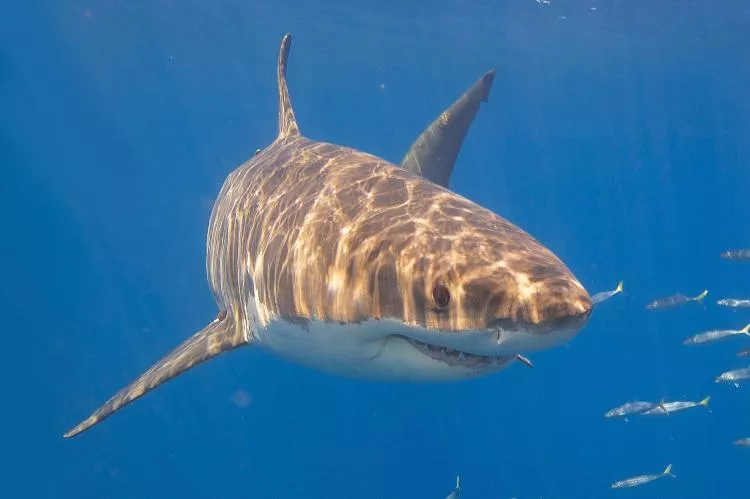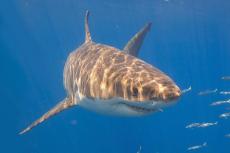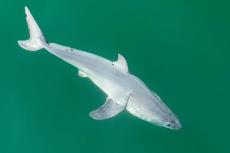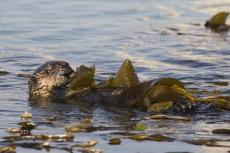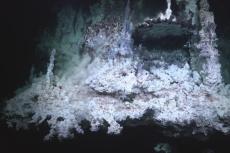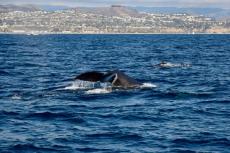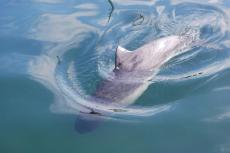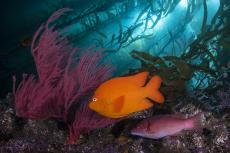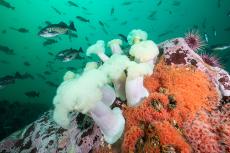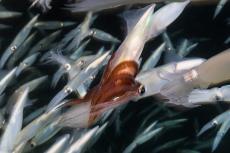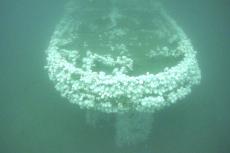Juvenile Great White Sharks Prefer Shallow Water
A team of marine biologists and ecologists have discovered that juvenile great white sharks prefer warm and shallow waters and congregate approximately half a mile from the shoreline along the Central California coast. The findings shed new light on the movements and ecological requirements of these enigmatic predators, with potential implications for conservation efforts.
The groundbreaking study delved into the drivers behind how juvenile white sharks move. Using special tracking technology that listens to the sharks and tracks their positions, the team of scientists, led by Emily Spurgeon, gathered detailed information about how the varying temperatures of the layers of the sea affect their travels.
The results are striking: juvenile white sharks selectively inhabit waters with temperatures ranging from 16 to 22°C and depths shallower than 2 meters. Furthermore, their choice of depth is closely linked to the temperature of the ocean at that level. During dawn and dusk periods, the sharks tend to occupy deeper waters, and they adjust their depths according to the temperature.
Regional endothermy
It is well known that juvenile white sharks have the ability to regulate their body temperature in specific parts of their bodies, rather than maintaining a consistent temperature throughout the entire body as mammals do. This is called regional endothermy. White sharks can generate and retain heat in certain regions, typically their muscles and organs, which allows them to stay warmer than the surrounding water. This ability is essential for their survival, and particularly important for sharks that inhabit colder waters, because it helps them to remain active and hunt effectively even in chilly environments.
Protecting great white sharks
The researchers' discovery challenges previous assumptions about the habitat preferences of young white sharks and underscores the importance of gaining a deep and detailed understanding of the factors influencing their movements. By understanding the young sharks’ preferences for specific environmental conditions, scientists can better predict their distribution, which will help plan effective conservation strategies.
Indeed, the implications extend beyond scientific curiosity. With juvenile white sharks favouring nearshore nursery habitats along the Central California coast, conservation efforts must take into account the importance of preserving these critical areas. By safeguarding the warm and shallow waters that serve as essential habitat for young white sharks, researchers hope to support the long-term viability of this iconic species.
Mysteries remain
However, while the study represents a significant step forward in understanding white shark ecology, there are still unanswered questions and many unknowns. Factors such as prey distribution, behaviour, and competition play crucial roles and warrant further investigation.
As scientists continue to unravel the complexities of the ecology of the great white shark, one thing remains clear: the Central California coast serves as a vital haven for these majestic predators during their formative years. By combining cutting-edge research with targeted conservation efforts, it will be easier to ensure that future generations have the opportunity to witness the awe-inspiring presence of juvenile great white sharks in our oceans.


